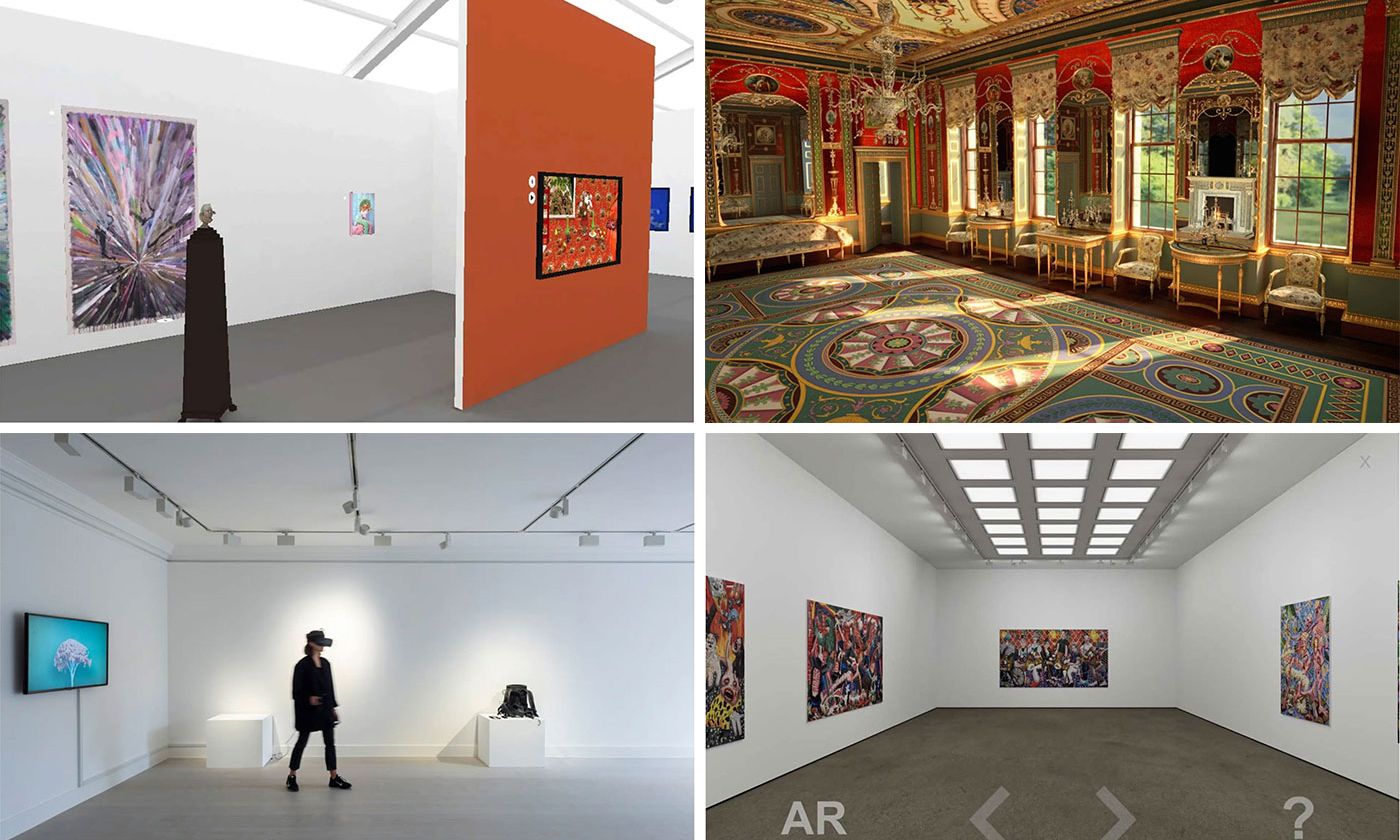Four representative art world VR pieces from 2020-21. Clockwise from top left: bitforms gallery on the Artland platform for the fully virtual untitled art fair, August 2020; the digital experience producers Noho's VR recreation of the Glass Drawing Room, at Northumberland House, London, for Corning Museum, New York, May 2021; Dale Lewis at Edel Assanti, on the Vortic Collect VR app, August 2020; a visitor explores Gazelli Art House London’s group show fifth edition of Enter Through The Headset, October 2020
In a 2014 bombshell, Facebook (now Meta) made a bold near $3 billion bet on the future, acquiring Oculus VR, a fledgling company pioneering virtual reality (VR) headsets. This audacious move, while initially met with skepticism, positioned Facebook at the forefront of a potentially revolutionary technology, aiming not only to dominate social media but shape the next frontier of human interaction in the immersive worlds of VR.
So what has happened in the succeeding decade?
VR has not suffered or benefited from the intense hype cycles of NFTs (non-fungible tokens). High costs of participation and slow consumer adoption still define the technology, even as major advances have occurred. While Artland has more or less become a Artsy competitor, Vortic (founded 2016) has been quietly working on the technical and curatorial advances that make the immersive display of physical artworks a viable reality for the artworld.
At December’s Untitled Art Fair in Miami, some 50 international galleries created virtual exhibitions. What’s been going on this last decade in VR both in and outside of the art world?
Ditching the need to be physically tethered to a PC, the Oculus Quest (2019) and other standalone headsets have made VR more accessible as a personal electronic device.
When we were all stuck at home during the global pandemic there was a surge of interest in VR, which was covered by The Art Newspaper's XR Panel, but the technology never really reached mass adoption in consumer electronics of the art world causing many to wonder, “If not now, when?”
Games like Beat Saber (2018) and Pistol Whip (2019) became breakout hits, demonstrating the potential of VR for fitness. These fitness games relied upon technical advances such as motion tracking, wireless capability and improved comfort of headsets.
Major artists like Billie Eilish (2022) and Travis Scott (2020) have embraced VR concerts, offering fans immersive and unique experiences that go beyond a typical live show.
The ability to “feel” virtual objects with gloves like VRgluv Manus Prime added touch sensations to VR experiences.
Interactive narratives, virtual theatre productions, and groundbreaking dance performances defied physical limitations. Nonny de la Peña's Hunger in Los Angeles a VR narrative presented in the New Frontier section at Sundance Fesitval in 2012, had set the standard, using an early prototype of what became Oculus Rift, and sparking conversations about VR's potential for social documentary.
3D virtual artworks are now regularly made in real-time with tools such as Quill and Tilt Brush.
Apple's Vision Pro, launched in February, joins the Meta Quest 3 in offering mixed reality experiences to the user.
Platforms like Mozilla Hubs allowed organisations like Miami’s Mud Foundation to open VR up to anyone to create virtual worlds, galleries, and interactive experiences, democratising art creation and fostering vibrant communities.
While breathy discussions about the Metaverse creating a virtual world replacing the internet have now dissipated, VR was temporarily seen as essential to our metaverse-centric lives.

